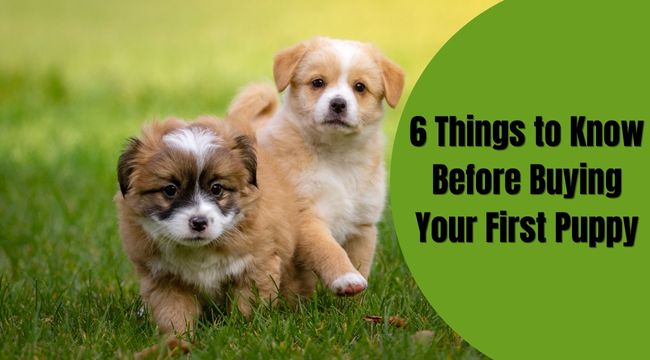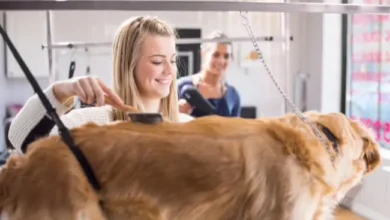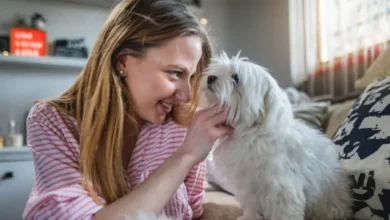
Getting your first puppy is super exciting! But, before you bring your new furry friend home, there are important things to know. It’s like preparing for a new adventure. You need to pick the right puppy for you and understand that having a dog is a big responsibility. This means spending time and effort, and sometimes money, to make sure your puppy is happy and healthy. In this guide, we’ll talk about the important stuff to help you get ready for the awesome journey of having a puppy in your family!
Choosing a Breed
With approximately 200 recognized dog breeds in the world, knowing which one is right for you can be a challenge. When choosing a puppy, compatibility is key. Consider factors such as personality type, energy levels, and grooming needs to determine how well they will match your lifestyle. Another important consideration is the size of your puppy. Keep in mind that a puppy can reach full size in a relatively short time frame, so it is important to research the breed you are thinking of buying.
Consider your living space to determine whether it is big enough for a larger, more energetic breed, such as a German Shepherd, which will continue to grow rapidly. Smaller living spaces are more suitable for smaller toy dog breeds such as Chihuahuas, Pomeranians, and Shih Tzus. Visit Golden Day Doodles if you are interested in adopting an Australian Labradoodle. To help you with your decision, here is a guide to the growth stages of puppies based on their size:
- Toy Breeds: Toy breeds will gain approximately one pound per month, up to around eight months old.
- Small Breeds: They grow rapidly from around two to six months and are fully grown at around 12 months.
- Medium Breeds: These breeds will grow the most in the first eight months and will be fully grown at around 12 to 15 months.
- Large Breeds: Large dog breeds grow quickly in the first 10 months before slowing down for the last eight months.
Along with your living space, give thought to green spaces nearby. Puppies are energetic and need plenty of space to play and run around in. Do you have a backyard or a park where your puppy can go for walks and to the toilet? Also, give thought to any small children in your household and how they will get along with your new family member.
Puppy House Training
Bringing a new puppy home is exciting, but teaching them where to go potty is a crucial step. Here’s a short guide to help:
- Consistent Schedule: Puppies need a routine. Take them outside frequently, especially after meals and naps.
- Positive Reinforcement: When your puppy goes potty outside, praise them! Positive reinforcement helps them understand what they’re supposed to do.
- Patience is Key: Accidents will happen. Stay patient and avoid punishment. Instead, clean up the mess thoroughly to eliminate smells that might attract your puppy back to the same spot.
- Designated Bathroom Spot: Choose a specific area outside for potty breaks. This helps your puppy associate that spot with going to the bathroom.
- Crate Training: Use a crate to help with house training. Dogs naturally avoid soiling their living space, making crates a useful tool for teaching them to hold it until they’re outside.
Remember, every puppy is different, so be patient and consistent. With time and positive reinforcement, your puppy will learn where to go potty, making your home a happier place for both of you!
Cost
When getting a new puppy, understanding the potential costs involved is essential for responsible pet ownership. Here’s a breakdown to help you plan:
Initial Puppy Purchase:
- Purebred dogs: $500 to $3,000 (varies by breed and breeder location).
- Adoption fees from shelters: $50 to $300 (may include microchipping, spaying/neutering, and vaccinations).
Health Essentials:
- Vaccination: $80 – $150 for core vaccines (may vary).
- Spay or Neuter Surgery: $35 – $500 depending on gender.
- Microchip Identification: $25 – $60 per implant.
- Flea, Tick, and Heartworm Prevention: Approximately $50 per month.
Pro Tip: Consider preventive pet care plans for potential reimbursement.
Additional Puppy Expenses:
- Pet Supplies:
- Food: $200 to $500 per year (varies by size and breed).
- Bowls: $10 to $50.
- Crate/bed: $25 to $250.
- Potty pads: $20 to $100 per box.
- Leash and collar: $10 to $50.
- Toys: $10 to $200.
- Treats: $50 to $300 per year.
- Pet Care Services:
- Dog walker: $15 to $40 per walk.
- Obedience training: $250 for a six-week group class.
- Dog groomer: $20 to $75 (varies by services and breed).
- Doggy daycare and boarding: $40 per day or $75 and up for overnight stays.
- Health Care Costs:
- Basic vet care: $150 per annual wellness exam.
- Emergency vet care: Average visit $1,000, potentially more for surgeries.
- Pet insurance premium: Less than $50 per month, offering coverage for unexpected vet costs.
Remember, these are estimates and actual costs can vary based on factors such as location, breed, and individual needs. Planning and budgeting for these expenses will contribute to a happy and healthy life for your new furry family member.
Time Commitment
Most dog owners should spend at least two hours per day with their pets; however, this could be much more with a puppy. From house training, playing, and exercising to initial vaccinations and veterinary visits, you can expect to devote a significant amount of your time to your new canine companion.
It is also worth remembering that as your puppy is as yet untrained, leaving it alone for long periods could cause it to damage your furniture and belongings as well as cause anxiety and loneliness. You should also consider who will look after your puppy when you are away for work or vacations, looking into nearby pet care facilities if need be.
Puppy Proofing
Puppies may look harmless, but their curiosity and desire to explore their environment can cause destruction to your home. Chewing your remote controls, scratching your furniture, and slobbering over your slippers are all common traits displayed by puppies. With all of this awaiting you, prepare yourself by puppy-proofing your home with the following steps:
- Dog gates: While you are house-training, keeping your puppy in areas that are easier to clean, such as the kitchen, is advisable. Dog gates can help you create safe, no-go areas in your home.
- Keep all electrical cords out of your puppy’s reach to prevent it from chewing on them, and block electrical outlets with outlet covers.
- A non-toxic, anti-chew spray can be used on furniture to keep your pet from chewing on it.
- Lock cabinets containing cleaning supplies, medications, and any other harmful or toxic ingredients which your puppy could swallow.
- Keep houseplants away from your pet so it cannot destroy them or chew on their leaves.
- Securely cover your trash cans to prevent your puppy from sniffing out old garbage, which can cause gastrointestinal upsets as well as poisoning.
Stock Up On Essentials
Make your new puppy feel welcome in its new home by stocking up on some essentials, such as nutritious puppy food, which is specially formulated to meet its developmental needs. Other puppy essentials you will need include:
- Dog bed
- Identity tag
- Leash and harness
- Collar
- Grooming items
- Treats
- Food and water bowls
- Chew toys
By considering the points highlighted in this article, you can fully prepare yourself for taking on the joyful and rewarding yet challenging task of buying your first puppy.




